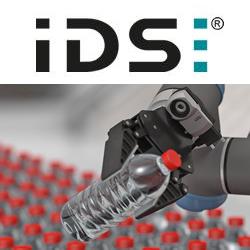Bombardier Uses KUKA Robots to Assemble their Newest, Largest Airliners
Bombardier Aerospace today announced that it expects to achieve predictable repeatability and enhanced quality while preventing ergonomic issues on the production line for the CSeries aircraft by using six 12-ton (10.89 metric ton) robots in the assembly of the cockpit and fuselage of the jetliner. In addition, the company also expects to reduce by more than 40 hours the cycle time needed to assemble the aircraft.
MONTRÉAL, QUÉBEC (Marketwire - May 31, 2011) - Bombardier Aerospace today announced that it expects to achieve predictable repeatability and enhanced quality while preventing ergonomic issues on the production line for the CSeries aircraft by using six 12-ton (10.89 metric ton) robots in the assembly of the cockpit and fuselage of the jetliner. In addition, the company also expects to reduce by more than 40 hours the cycle time needed to assemble the aircraft.
"The use of advanced robotic technology is emblematic of the clean-sheet approach we've taken to building the CSeries aircraft," said Francois Minville, Vice President, CSeries Manufacturing, Bombardier Commercial Aircraft. "The use of the robots will enable us to offer a superior aircraft at the best cost to our operators."
Until now, Bombardier aircraft were assembled largely by hand. However, at a diameter of 12 feet (3.7 m), the fuselage of the CSeries family of aircraft is larger than any airliner ever built by Bombardier. The wider fuselage offers superior comfort for passengers, but poses an ergonomic challenge during assembly.
Joining the fuselage sections of the aircraft by hand would require many hours to assemble the necessary scaffolding for workers to reach the top of the plane, as well as many more hours to move the scaffolding down the length of the fuselage.
The robots are able to extend to a full height of 18 feet, 9 inches (5.72 m). From their base, they can reach the top or the bottom of the aircraft.
In as little as 32 seconds, each robot can drill a small hole and then precisely rivet or hammer a fastener to the aluminium-lithium fuselage. For the composite fuselage sections, the process takes 53 seconds to drill, add a sealant and then a fastener. Four robots, working with one operator each, can join the fuselage sections for a CSeries aircraft in 17 hours. Advanced vision control systems ensure that each hole is drilled within one-hundredth of an inch (0.254 mm).
The CSeries aircraft, which are optimized for the single-aisle, 100- to 149-seat market, will deliver the lowest operating costs in their class, exceptional operational flexibility, widebody comfort and an unmatched environmental scorecard. The aircraft are scheduled to enter into service in 2013.
Custom-made platforms will support and move the six robots, and end effectors, located at the end of the robotic arms, will house tooling to perform the work.
Two of the robots have already been delivered to the Saint-Laurent Manufacturing Centre in Montréal, where Bombardier will assemble the carbon-fibre aft fuselage and cockpit for the CSeries aircraft. These robots will fuse together the cockpit with a front section of the fuselage, and also assemble the aft fuselage.
Four more robots are scheduled to be installed at the Mirabel facility, located about 30 miles (40 km) north of Montréal, where final assembly of the CSeries aircraft will take place. At Mirabel, the robots will rivet the front section, including the cockpit and the front fuselage, with the mid, rear and aft sections of the fuselage. Working in tandem, one on each side of the aircraft fuselage, the four robots will install the rivets to join the fuselage sections.
The 12-ton weight of the robots is necessary to ensure stability, and thus precision, during drilling and riveting. Most of the weight is located in the wheeled base platform, which allows the robots to travel the length of the fuselage during production.
A vertical lift raises or lowers the robot arm into place along the fuselage. The barrels of the end effector swivel into place when each task is performed, and two lasers, aimed at cross purposes, ensure that the fasteners are flush with the fuselage skin for optimal quality.
Robot operators and maintenance employees are being trained at the Saint-Laurent Manufacturing Centre to work on the robots. A fuselage test barrel, made by Shenyang Aircraft Corporation (SAC) of China, which will supply the CSeries aircraft centre fuselage, is being used to test manufacturing concepts.
"We're adopting and adapting lean, flexible, safe and ergonomically advanced solutions to ensure that the manufacturing process for the CSeries aircraft is fully optimized," said Mr. Minville. "The installation and testing of these advanced robots demonstrates that Bombardier is moving full steam ahead in making the CSeries aircraft a reality, a jetliner that will set a new benchmark in the industry."
About Bombardier
A world-leading manufacturer of innovative transportation solutions, from commercial aircraft and business jets to rail transportation equipment, systems and services, Bombardier Inc. is a global corporation headquartered in Canada. Its revenues for the fiscal year ended January 31, 2011, were $17.7 billion, and its shares are traded on the Toronto Stock Exchange (BBD). Bombardier is listed as an index component to the Dow Jones Sustainability World and North America indexes. News and information are available at www.bombardier.com or follow us on Twitter @BombardierInc.
Featured Product

